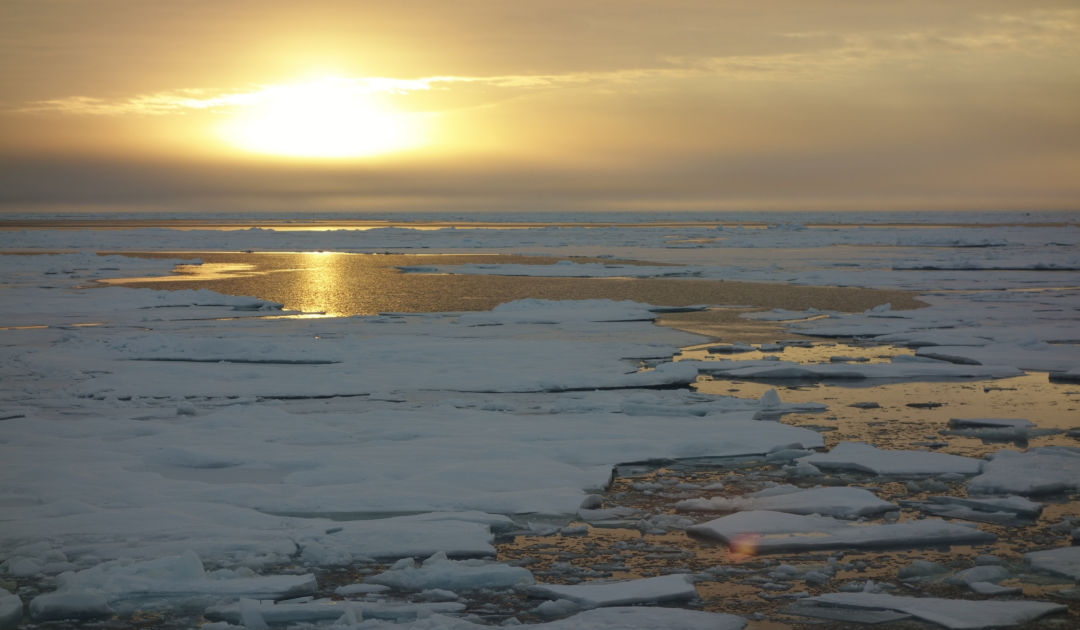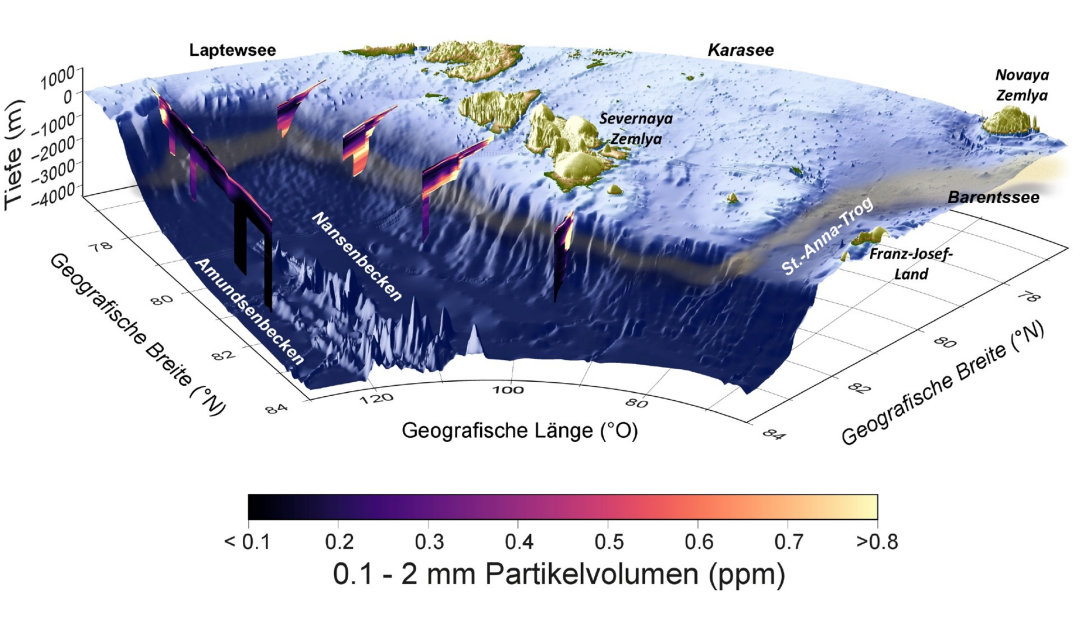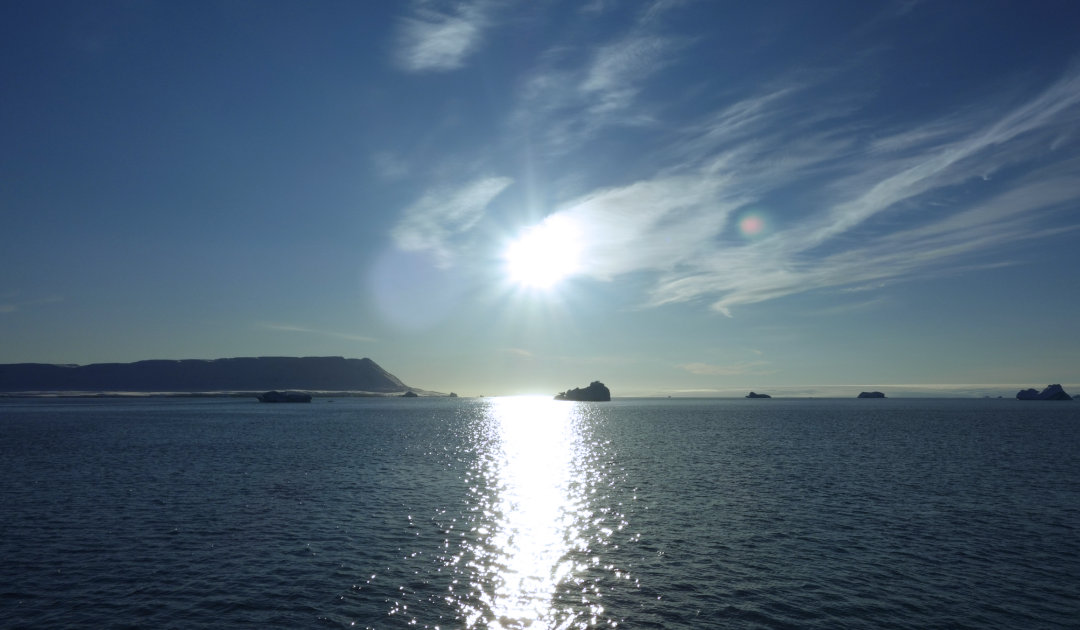
Every year, the cross-shelf transport of carbon-rich particles from the Barents and Kara Seas could bind up to 3.6 million metric tons of CO2 in the Arctic deep sea for millennia. In this region alone, a previously unknown transport route uses the biological carbon pump and ocean currents to absorb atmospheric CO2 on the scale of Iceland’s total annual emissions, as researchers from the Alfred Wegener Institute and partner institutes report in the current issue of the journal Nature Geoscience.
Compared to other oceans, the biological productivity of the central Arctic Ocean is limited, since sunlight is often in short supply – either due to the Polar Night or to sea-ice cover – and the available nutrient sources are scarce. Thus, the microalgae (phytoplankton) in the upper water layers have less energy available than is the case in other oceans. Therefore, it was a big surprise when researchers discovered large amounts of particulate carbon – that is, carbon bound in plant debris – in the Nansen Basin in the central Arctic during the ARCTIC2018 expedition in August and September 2018 aboard the Russian research vessel Akademik Tryoshnikov. More precise measurements revealed a water body with large amounts of particulate carbon at depths of up to two kilometers, consisting of bottom water from the Barents Sea. The latter is formed when sea ice forms in winter, the cold, heavy water sinks and eventually flows from the shallow shelf on the coast down the continental slope into the deep Arctic basin.

“With our measurements, we were able to calculate that more than 2,000 tons of carbon per day flow into the Arctic deep sea through this water mass transport, which corresponds to 8,500 tons of atmospheric CO2. Extrapolated to a year, this is 3.6 million tons of CO2, which is of the same order of magnitude as the annual emissions of Iceland,” explains Dr. Andreas Rogge, lead author of the Nature Geoscience study and marine researcher at the Alfred Wegener Institute, Helmholtz Centre for Polar and Marine Research (AWI). The plume of carbon-rich water extends from the Barents and Kara Sea shelves up to about 1000 kilometers into the Arctic Deep Sea Basin. Via this newly described mechanism, the Barents Sea, which is the most productive Arctic marginal sea anyway, effectively removes about 30 percent more carbon from the atmosphere than previously thought. Model calculations also showed that the outflow occurs in seasonal pulses, since the uptake of CO2 by phytoplankton in the Arctic coastal seas also occurs exclusively in summer.

Understanding transport and transformation processes within the carbon cycle is essential to assess global carbon dioxide budgets and thus to make global warming projections. At the ocean surface, unicellular algae absorb CO2 from the atmosphere and sink into the deep sea after they die. If the carbon bound in this way reaches the deep water, it is only released again when the water reaches the sea surface again through circulating currents, which in the Arctic corresponds to several thousand years. On the other hand, it can even take millions of years for carbon to be deposited in deep-sea sediment, as it is only then released again by volcanism. This process, also known as the biological carbon pump, can thus remove carbon from the atmosphere for a very long period of time and represents an important sink in the carbon cycle of our planet. In addition, food reaches the deep sea via this route, on which the animals there, such as starfish, sponges and worms, feed. However, what proportion of the carbon is actually absorbed by the ecosystem requires further research.

There are other poorly explored areas in the polar shelf seas where bottom water is formed and flows into the deep sea. Thus, it can be assumed that the global influence of this mechanism as a carbon sink is even much greater. “However, increasing global warming contributes to less ice and thus less bottom water being formed, but also to more light and nutrients being available for phytoplankton, so that more CO2 is sequestered. Thus, the future development of this carbon sink cannot be estimated at the moment and the identification of possible tipping points urgently requires further research,” says Andreas Rogge.
Press Release Alfred Wegener Institute Bremerhaven
More on the topic





